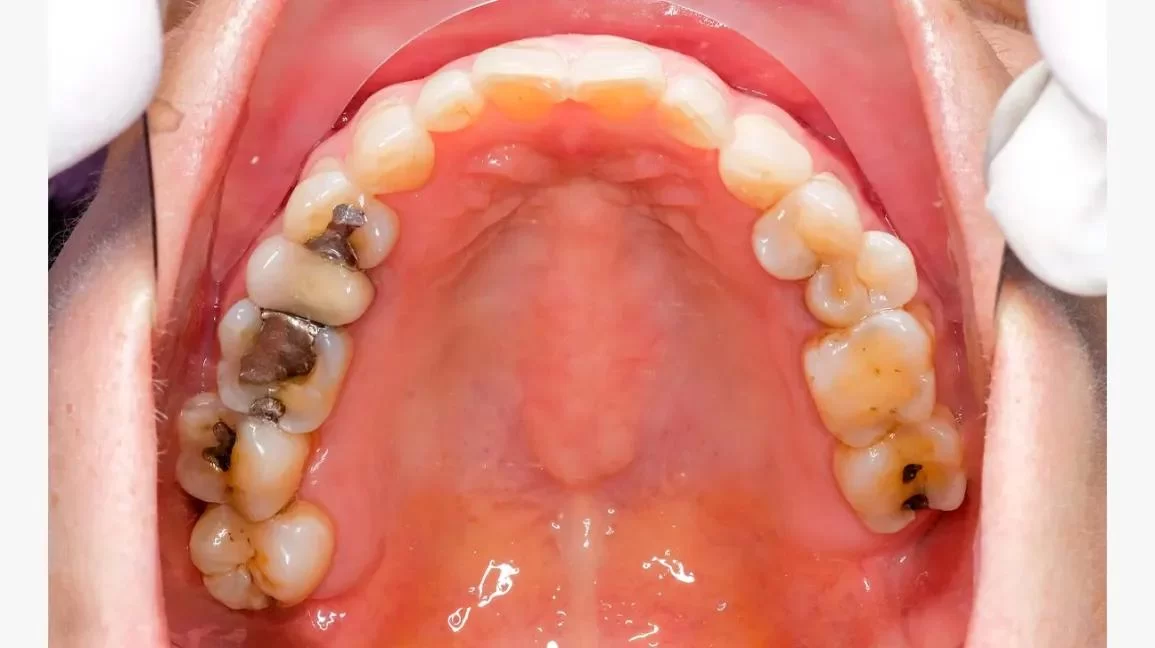
Why You Should Replace Old Dental Fillings: Benefits and Importance Explained
- Understanding Old Dental Fillings
- Signs You Need to Replace Your Old Dental Fillings
- The Benefits of Replacing Old Dental Fillings
- The Risks of Not Replacing Old Fillings
- How to Replace Old Dental Fillings
- Preventive Care and Maintenance for Healthy Fillings
1. Understanding Old Dental Fillings
Dental fillings are essential in restoring teeth that have been damaged by cavities or decay. However, over time, these fillings can become worn down or ineffective. Whether made of silver amalgam, composite resin, or other materials, dental fillings have a lifespan. As they age, they can lose their effectiveness and may even lead to more dental issues if not replaced.
For example, a patient named John had a series of old amalgam fillings that had been in place for over 20 years. Over time, he noticed that his fillings were starting to crack and wear, leading to sensitivity and even a bit of pain when chewing. This is a clear indication that it was time for a replacement.
2. Signs You Need to Replace Your Old Dental Fillings
It’s important to keep an eye on your dental fillings. Here are some common signs that it may be time to replace them:
- Cracks or Chips: Fillings can crack or chip over time, especially when exposed to chewing pressure or extreme temperature changes. If you notice visible damage to your filling, it should be replaced.
- Tooth Sensitivity: If your tooth feels sensitive to hot, cold, or pressure, it might mean that the filling is no longer providing a proper seal or has started to wear out.
- Filling Falling Out: If your filling falls out or becomes loose, it’s a clear indication that it needs immediate replacement. A missing filling can leave the underlying tooth exposed to further damage.
- Discoloration: If the filling appears stained, discolored, or visible when you smile, it may not only affect your appearance but also signal that the material is degrading.
If any of these signs are familiar to you, it's time to consult with a dentist for an assessment and potential replacement.
3. The Benefits of Replacing Old Dental Fillings
Replacing old dental fillings is important for more than just aesthetic reasons. Here are the key benefits of replacing old fillings:
- Improved Oral Health: Over time, old fillings can deteriorate, leaving space for bacteria to enter the tooth, leading to further decay. By replacing old fillings, you can protect your teeth from future damage.
- Enhanced Comfort: If your old fillings are causing tooth sensitivity or discomfort, replacing them can provide immediate relief and restore comfort when eating or drinking.
- Prevention of Larger Issues: If left untreated, damaged fillings can lead to more serious dental problems, including infections or the need for root canal treatment. Replacing the fillings early prevents these more costly and invasive treatments.
- Better Aesthetic Appearance: Modern filling materials like composite resins match the natural color of your teeth, providing a more seamless look compared to traditional amalgam fillings.
For instance, when Jane, a young professional, decided to replace her old amalgam fillings with new composite ones, she not only experienced less tooth sensitivity but also felt more confident in her smile.
4. The Risks of Not Replacing Old Fillings
If you delay replacing old fillings, several risks can arise:
- Increased Tooth Decay: As fillings wear down or crack, they lose their ability to protect the tooth from further decay. This can lead to the formation of new cavities.
- Infection: If bacteria can enter through a damaged or deteriorating filling, it can lead to infections that may require more serious treatments like a root canal or extraction.
- Expensive Future Procedures: Avoiding replacing a filling now could result in more expensive dental treatments in the future, such as crowns or implants.
For example, Mike didn’t replace his old filling, and as a result, his cavity worsened, requiring a costly root canal procedure later on. Had he replaced the filling earlier, he could have avoided this issue.
5. How to Replace Old Dental Fillings
The process of replacing old fillings is fairly straightforward. Here’s how it typically goes:
- Consultation: The first step is to visit your dentist, who will assess the condition of your current fillings and recommend replacements if necessary.
- Removal of Old Fillings: The dentist will remove the damaged or decayed filling and clean the cavity to ensure it is free of bacteria.
- Placement of New Filling: Depending on the material chosen (composite, porcelain, or amalgam), the new filling is placed, shaped, and cured to restore the tooth to its natural state.
- Follow-up Care: After the procedure, you may need to follow up with your dentist to ensure that the filling is properly set and there are no issues with the new filling.
Modern dental materials ensure that the new fillings are durable, comfortable, and natural-looking. If you are considering replacing old fillings, make sure to discuss the best options with your dentist.
6. Preventive Care and Maintenance for Healthy Fillings
After replacing old fillings, it’s important to take steps to care for your new fillings and maintain optimal oral health. Here are some tips:
- Good Oral Hygiene: Brush and floss regularly to prevent cavities and keep your fillings in good shape. Use a fluoride toothpaste to strengthen your teeth.
- Regular Dental Check-ups: Visit your dentist regularly to ensure your fillings are still in good condition and to catch any potential problems early.
- Avoid Hard Foods: Hard foods or chewing ice can cause damage to your fillings, so be cautious when eating.
By following these practices, you can help your new fillings last longer and maintain your overall oral health.
For more information on replacing old fillings and maintaining a healthy smile, visit Dentistry Toothtruth for expert advice and dental care products.







 Central Carolina Oral & Maxillofacial Surgery5.0 (51 review)
Central Carolina Oral & Maxillofacial Surgery5.0 (51 review) 410 Dental Associates5.0 (161 review)
410 Dental Associates5.0 (161 review) Fox Valley Endodontic Specialists4.0 (4 review)
Fox Valley Endodontic Specialists4.0 (4 review) Perfect Dental – Taunton4.0 (782 review)
Perfect Dental – Taunton4.0 (782 review) Richter Dental4.0 (321 review)
Richter Dental4.0 (321 review) Wantagh Seaford Pediatric Dentistry4.0 (252 review)
Wantagh Seaford Pediatric Dentistry4.0 (252 review) The Importance of Oral Health Education During Pregnancy for a Healthy Pregnancy
The Importance of Oral Health Education During Pregnancy for a Healthy Pregnancy Best Tips for Brushing Your Teeth Properly for Healthy Gums: Essential Techniques for Oral Health
Best Tips for Brushing Your Teeth Properly for Healthy Gums: Essential Techniques for Oral Health Why Skipping Dental Checkups Can Lead to Bigger Oral Health Problems
Why Skipping Dental Checkups Can Lead to Bigger Oral Health Problems Advantages of Porcelain Dental Restorations
Advantages of Porcelain Dental Restorations How Can Diabetes Cause Tooth and Gum Problems? Preventing and Managing Oral Health Issues
How Can Diabetes Cause Tooth and Gum Problems? Preventing and Managing Oral Health Issues Healthy Habits for Promoting Good Oral Health and Hygiene: Tips for a Healthy Smile
Healthy Habits for Promoting Good Oral Health and Hygiene: Tips for a Healthy Smile